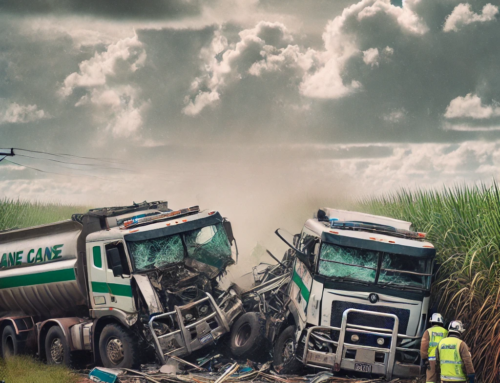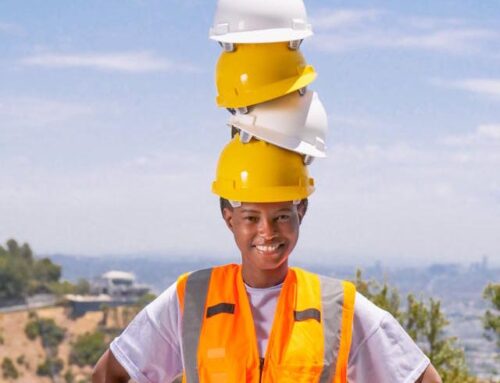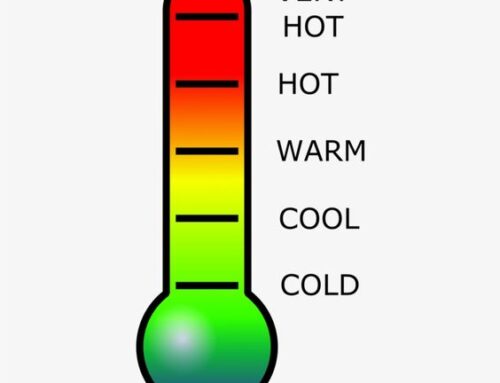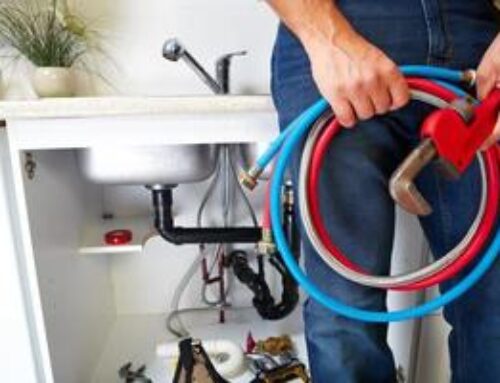In September 2022, a worker was electrocuted when the metal frame he was holding contacted a high voltage overhead powerline at a construction site where a shed was being built.
Initial enquiries indicate the metal frame was being moved onsite by a pick-and-carry mobile crane, when the worker attempted to prevent the metal frame striking a nearby vehicle. It was not known that the metal frame had made contact with an overhead powerline at the time.
* Investigations are continuing.
Safety issues
Contact with overhead powerlines, or coming too close to overhead powerlines, can be fatal. You don’t need to come in direct contact with them to receive an electric shock. All electric line voltages are lethal, with the risk of flashover increasing as the electric line voltage rises.
The most common electrical risks associated with working near overhead powerlines are:
Hazards from overhead powerlines may arise from:
Ways to manage health and safety
Taking steps to manage risks is a condition of doing business in Queensland. Effective risk management starts with a commitment to health and safety from those who manage the business. If an incident occurs, you’ll need to show the regulator that you’ve used an effective risk management process. This responsibility is covered by your primary duty of care in the Electrical Safety Act 2002 and the Work Health and Safety Act 2011.
There are duties to ensure electrical safety for persons conducting a business or undertaking, designers, manufacturers, importers, suppliers, installers, repairers, persons in control of electrical equipment, workers and others.
Use the hierarchy of controls to help decide how to eliminate and reduce risks in your place of work. The hierarchy of controls ranks types of control methods from the highest level of protection and reliability to the lowest. It’s a step-by-step approach to eliminating or reducing risks. You must work through the hierarchy of controls when managing risks, with the aim of eliminating the hazard, which is the most effective control.
Possible control measures to prevent similar incidents
Effective control measures for working near overhead electric lines are often made up of a combination of controls. This includes eliminating the risk of electric shock by turning off the power. The PCBU, principal contractor or operating plant owner should discuss options for de-energising or re-routing the electricity supply with the relevant electricity entity.
De-energising or re-routing powerlines should be arranged with the electricity entity as quickly as possible as this can take some time to arrange. Where overhead powerlines have been de-energised, confirmation should be sought from the person in control of the powerline before undertaking any work.
If eliminating the risk of contacting overhead powerlines by de-energising or re-routing powerlines is not reasonably practicable, you must consider using a combination of control measures, to minimise the risk.
If you must work near powerlines, you should follow these steps:
Develop a safe system of work before you start work
Avoid going into exclusion zones
An exclusion zone is a safety envelope around an overhead electric line. No part of a worker, operating plant or vehicle should enter an exclusion zone while the overhead electric line is energised (live). Different exclusion zones apply depending on the level of competence, training and skills of workers and whether the worker has been authorised by the owner or person in control of the electric line to work within a closer distance.
Examples include:
Further Information
Suncoast Safety specialises in all types of electrical works & Electrical Safe Work Method Statements (SWMS) for all types of business.
Friendly Service, Free Quotes and Helpful Advice. Contact us Today 0429 990 418 or (07) 5493 2961
Serving but limited to the Sunshine Coast, Brisbane, Gold Coast, Ipswich, Gympie, Maryborough, Hervey Bay, Bundaberg, Central Queensland & Far North Queensland






